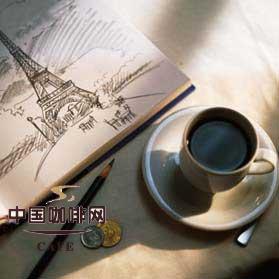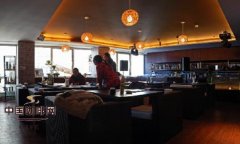The relationship between Coffee and Literature Cafe is closely related to French literature

If you live in Paris for a while, you will find that the French like cafes. There are many cafes in Paris that are famous for their literature and art. Some critics even say that it is the cafe that has created the history of modern French literature. This may be an exaggeration, but the inextricable bond between cafes and French literature over the centuries is obvious to all.
Alexis, who won this year's top prize in French literature, admitted that he wrote the novel "French Art of War" word by word in the cafe. "I can't write anything at home. It's only in the cafe that I'm inspired. Strangely enough, people come and go in the cafe. A little noisy and noisy atmosphere makes me feel calm and full of thoughts. "
The cafes in Paris are mainly located in the Montmartre Heights, Saint-Germain and Montparnasse on the left bank of the Seine-Marne River.
The most famous cafe in Montmartre Heights is the Ling Rabbit. It looks simple behind the Sacred Heart Cathedral, with a wooden fence surrounding a low two-story building that resembles a farmyard. However, it was the birthplace of the French literary and artistic revolution at the beginning of the 20th century, where many artistic schools were born. At that time, when night fell, Picasso, Max Jacob, Apolinel and many other painters and writers would visit here to talk about art and creation.
Saint-Germain on the left bank of the Seine-Marne River is a neighborhood frequented by writers and calligraphers. "God of Flowers", "Lip" and "Twin" on the same street are the most famous cafes. Sartre, Simone de Beaufort and Camus often meet at the Flower God Cafe to discuss existential literature.
Montparnasse is also famous for its numerous literary cafes. Cafes such as cloves and elites are frequented by poets Baudelaire, American writers Miller, Hemingway and others.
Many of these "literary youth" used to be an indispensable part of the cafe, where they talked and influenced each other, and their thoughts and passions often collided with brilliant artistic sparks and created extraordinary works of art.
Today, even if you walk into these cafes late at night, you can often see well-known or unknown writers sitting in a corner writing. Some people joke that one can get a general idea of a day's literary life in Paris by drinking a cup of coffee in Saint-Germain's cafe.
The cafe is closely related to French literature. The cafe does not dislike these poor writers who are financially strapped and consume less. Cafes such as "Twin couple", "Lip" and "God of Flowers" have also set up their own literary awards to reward and encourage young writers who immerse themselves in writing every year.
When the French conducted a survey of foreign travelers and was asked what was the most attractive thing about Paris, many people answered not scenic spots such as the Louvre and the Eiffel Tower, but cafes scattered on the streets of Paris.
Some people once compared cafes to French skeletons, saying that if they were torn down, France would fall apart. Xu Zhimo once said, "if there are no cafes in Paris, I am afraid it will become nothing cute."
Important Notice :
前街咖啡 FrontStreet Coffee has moved to new addredd:
FrontStreet Coffee Address: 315,Donghua East Road,GuangZhou
Tel:020 38364473
- Prev

Boutique coffee culture the way Italians drink coffee is unique.
When Italians drink coffee, they have to stand up. Italians love coffee, so cafes are everywhere. But you may not know that authentic Italian coffee is drunk standing up. It turns out that Italy is narrow and densely populated, with an inch of land and gold. If so many cafes were seated, it would not only occupy an area of land but also cost money. So they chose to drink it standing up. Anyway, the authentic Italian steamed coffee is very strong.
- Next

Celebrity and Coffee the relationship between Zheng Yongqing and the Cafe
In Japan, cafes also became popular among intellectuals and then among the general public by virtue of the cultural movement. On April 13, 1888, the first coffee shop in Japan opened twice in Tokyo's Ueno Nishimen-cho (another said that the earliest coffee shop in Japan was the washing Pavilion opened in Tokyo's Nippon Bridge in 1886). The owner, Zheng Yongqing, also has a special relationship with China.
Related
- How did the Salvadoran coffee industry develop in Central America?
- What exactly does the golden cup extraction of coffee mean?
- The Origin of Coffee flower
- [2023 Starbucks World Earth Day] there are more meaningful things besides free Starbucks coffee!
- What kind of coffee is there in Spain? 9 Flavors of Spanish Coffee
- Aromatic African coffee| Kenya's coffee culture and historical production area
- Liberica Coffee Bean knowledge: the characteristics of Liberian Coffee beans of the three original species of Coffee beans
- The origin and formula of Spanish latte introduces the taste characteristics of Bombon coffee in Valencia, Spain.
- How to adjust the solution of over-extracted coffee
- What is the tasting period of coffee beans? What is the period of coffee and beans? How should coffee wake up and raise beans?

